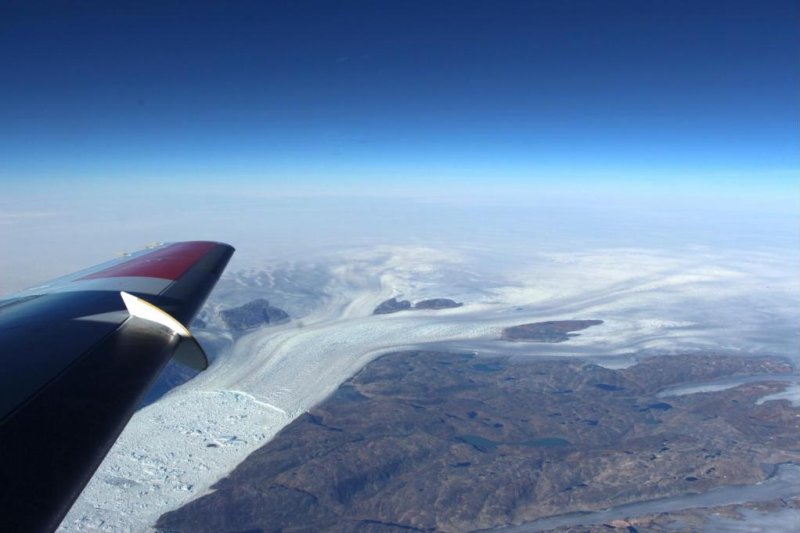A view out the window of the Operation IceBridge aircraft features Greenland's Helheim Glacier, one of the island's largest and fastest-melting glaciers. Photo courtesy of NASA
GREENBELT, Md., Sept. 6 (UPI) -- For the second time this year, NASA scientists are taking to the skies as part of Operation IceBridge. The IceBridge flights offers researchers a chance to measure the changes in Greenland's ice sheet.
The flights take place in an HU-25A Guardian aircraft outfitted with a variety of laser instruments used to measure the elevation and thickness of Greenland's polar ice, as well as the region's surface temperatures.
Scientists will continue to secure airborne observations through Sept. 16.
"Earlier in IceBridge's history, we only surveyed the elevation of these glaciers once a year," Joe MacGregor, IceBridge's deputy project scientist and a glaciologist with NASA's Goddard Space Flight Center, said in a news release.
MacGregor and his colleagues measured Greenland's glacial structures in the spring to establish a baseline from which to measure changes induced by summer melt.
"These glaciers experience the climate year-round," MacGregor added. "Now we're starting to complete the picture of what happens to them as the year goes on, especially after most of the summer melting has already occurred, so we can measure their cumulative response to that melt."
The Guardian's flight times are shorter than those enjoyed during the spring expedition, but the scientists expect to conduct two surveys, each 3.5 hours long, on most days.
Between 2003 and 2009, the Ice, Cloud, and land Elevation Satellite mission retrieved data similar to the observations being made by IceBridge. ICESat-2 will pick up where the original ICESat left off when it launches in 2018.















